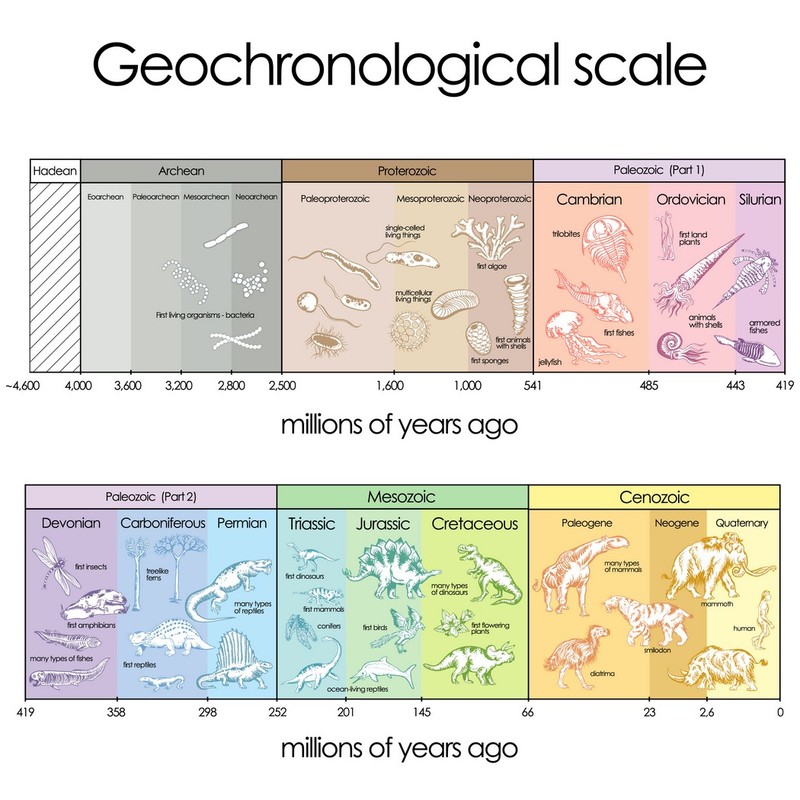23.1 Evolution refers to change through time
The Earth and the life found on its surface may seem stable and unchanging. However, they are not. Organisms and habitats are constantly changing. Changes that have happened in the past can be observed by looking at the fossils of organisms buried in layers of soil.
According to our current understanding, life on Earth first evolved in the oceans. Through gradual changes, primitive unicellular and multicellular organisms evolved from primitive algae.
The gradual development of living organisms is called evolution. Evolution happens all the time and has no specific direction. Evolution does not aim for any particular form or goal.
The evolutionary process began about four billion years ago with simple unicellular organisms.
The developmental stages of living organisms are divided into geological eras, each of which is characterized by the emergence of new groups of plants and animals and the extinction of older species. The story of human evolution provides answers as to how the modern man evolved into a dominant species and spread to different regions of the globe.
